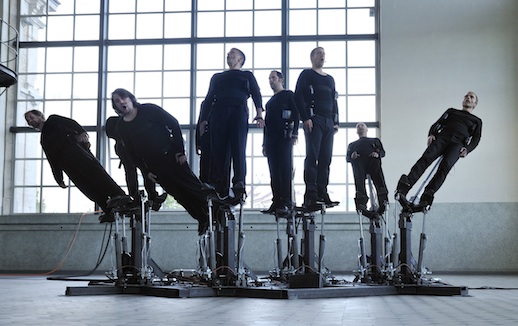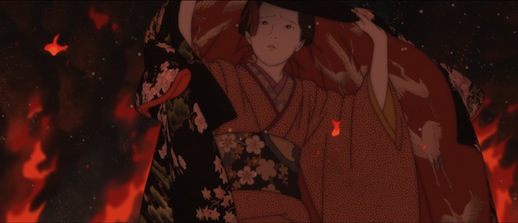Showcasing more than just the cutting edge
This February marks the sixteenth year of the Japan Media Arts Festival, first held in 1997. With the National Art Centre, Tokyo (NACT) as the main venue, additional symposiums, performances, and screenings are also taking place at satellite sites around the Roppongi area. Award-winning works on show over the twelve-day period have been selected from a record breaking 3,503 submissions, one third of which came from overseas. The festival divides media arts into four genres: Art, Entertainment, Manga and Animation, and within these categories there are yet further categories, meaning there really is something for everyone.
Japan is often considered a world leader in the media arts field, as I would agree, but this festival does not offer simply the cutting edge of technology. Rather, the jurors have clearly considered deeply the specific requirements of each division, looking past impressive means to also regard content and expression in each work. To focus on the Art Division, which garnered more than half of the initial festival submissions, multiple lines of enquiry and various narrative arcs are presented in a concise but somewhat comprehensive overview of what can be thought of as directional in the field.
With fifteen works on show at NACT, an equal amount for each division, the whole exhibition essentially opens with the Art Division Grand Prize-winner ‘Pendulum Choir’, a musical performance conducted by Swiss brothers Michel Décosterd and André Décosterd, who go by the name Cod.Act. In this piece, nine male choristers sing a cappella whilst fixed to hydraulically controlled platforms they have the ability to control independently. As if forming a single sonic organ, the men tilt back and forth in waves, their vocals complemented by various electronic sounds that seemingly emanate from amongst them.

Though there are two live demonstrations of this work included in the festival programme, a video of the musical performance is also on show for the full twelve days. Watching these nine men, their positioning and movements recalled the action of cilia. Each man resembles one of the vibrating structures that work collectively to achieve a single function. This exploration of technology and how it may be negotiated in relation to – as well as by – the human body seems to be a key concern for a number of other selected pieces. Take Seiko Mikami’s ‘Desire of Codes’ for instance. Her work relies on the presence of the human body in the present, past and future to be able to create surveillance images that are projected as a tessellated all-seeing eye, and are then cumulative results of this ongoing work. Entering the room, you feel your body scanned by microscopic cameras and videos that hone to the body, sensing the strength of the concept ‘closed circuit’. Surveillance, satellite photography specifically, is also playfully addressed in Kazuomi Furuya’s colourful family portraits entitled ‘My Sputnik’.
‘Species series’ by Wonbin Yang explores the life and death cycle of robots. Using highly sophisticated electronics to create small mechanisms that appear to be simply rubbish or unwelcome insects, this Korean artist challenges the classic mode of expressing technological advancement, and by doing so offers us a new way in which to interact with it. In rather the opposite manner, the gargantuan piece ‘Strata #4’ presents a new perspective from which to understand the mechanics and beauty of painting. Taking Flemish masterpieces as the subject, this project commissioned by the Palais des Beaux Arts, Lille, remodels works by Rubens and Van Dyck according to digitalized interpretations of traditional rule sets in painting.

Not just something for the now or a category to be pushed only towards the future, media art can also be a valuable resource for documentation. ‘Skinslides’ by Richi Owaki proposes a new way in which the body may be recorded. The movements of a dancer, and the particular way in which their limbs make contact with the surfaces they encounter, are projected across four acrylic screens that appear as light boxes on the dark gallery floor. The palpable pressure of the choreographed body in motion is captured in a totally new and thrilling manner, offering a feeling of uncanny presence in the absence.
To view another application of media art as documentation, one could also look to the numerous works that address the Great East Japan Earthquake. Compositions and musical performances collated in the web-based charity project ‘hibari – Aid Project for North Eastern Japan’ offer an international port of cultural exchange, whilst projects such as Sol Chord’s ‘Between Yesterday & Tomorrow’ focuses on the recording of personal micro-narratives following the catastrophe of 2011. Winner of the Excellence Award, this project asked artist participants to follow a set of filmmaking rules put in place by Shinjiro Maeda and Rina Okazawa. Resulting in the creation of numerous five-minute shorts, this work is screened as an omnibus, presenting snippets from the lives of creators via their excerpts of their films. Seeing that these were all gathered via their release on the Internet, it must be said that in using the web as a platform, specific modes of compilation and conceptualisation are made available.
Whilst for me the majority of this festival’s highlights appeared in the Art Division, this is not to say that the other three categories are not comparatively fascinating. From the Entertainment Division, I would strongly recommend Shunichiro Miki’s video work ‘The Warped Forest’, which will screen in full at Cinem@rt, though it appears only as filmic excerpts and preparatory sketches in the gallery. As for the Manga category, the extensive spread of ‘Les Cités Obscures’ books and posters certainly seem deserving of the Grand Prize. And last but not least, one of my personal favourites in the festival overall was the animated short film ‘Futon’ by Yoriko Mizushiri, winner of a New Face Award. Drawn with a delicacy and simplicity rarely found in contemporary animated film, the surrealistic and dreamlike wonderment that this animation induces, though not without a fair dose of eroticised humour, completely enraptured me.
Jessica Jane Howard
Jessica Jane Howard


